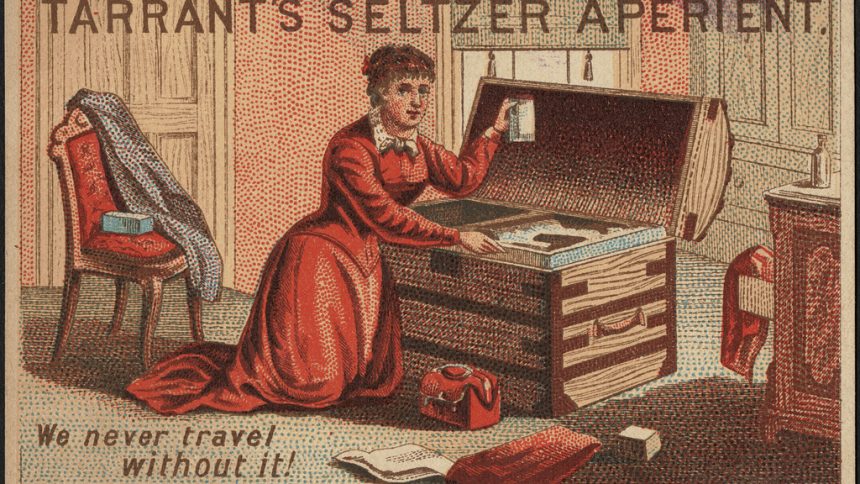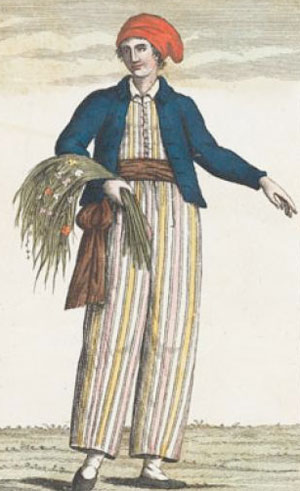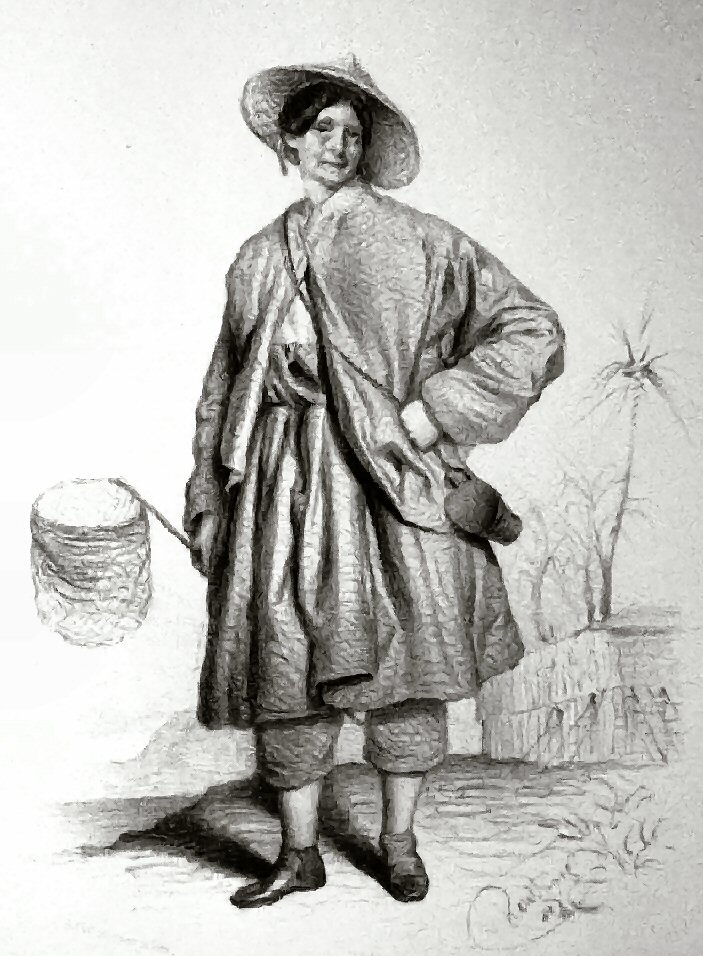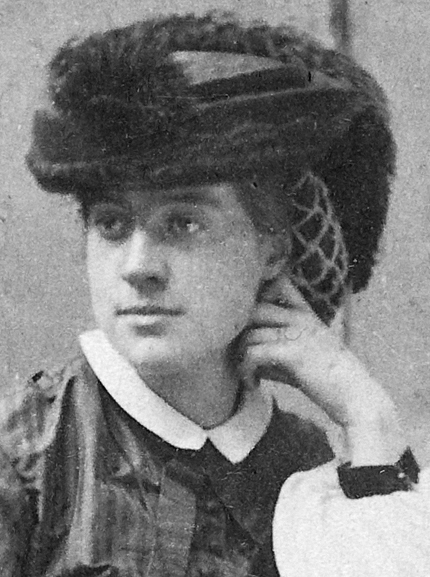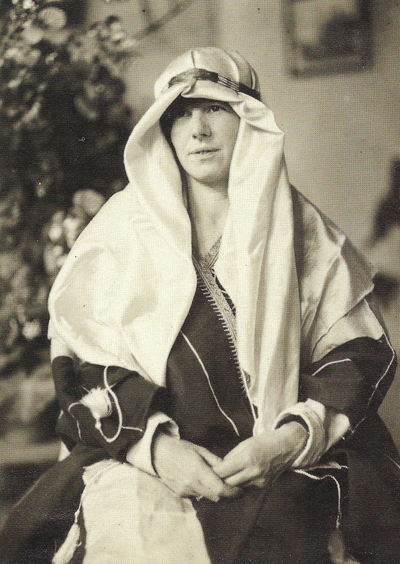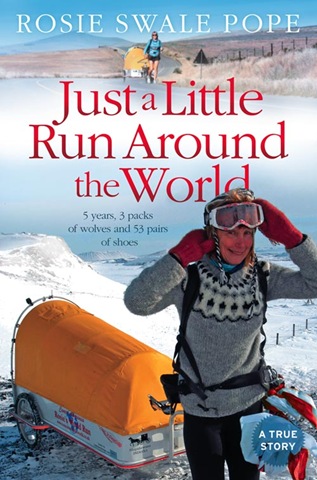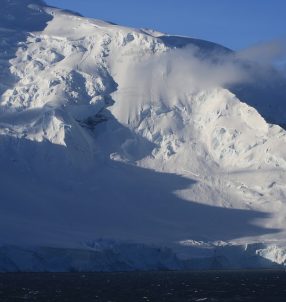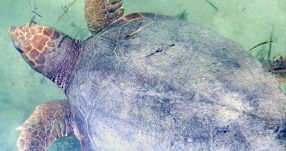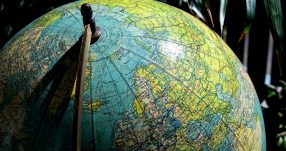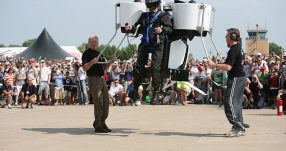For centuries, exploring, discovering and adventure were a mainly male domain, with women only being the good wives, who often were waiting and praying years for the safe return of their husbands. But there have been some brave females, pioneers of their days, who have paved the path for all the adventurous woman out there and have lost nothing of their inspirational powers.
Let us introduce to you 5 of most inspiring female travelers of all time!
Jeanne Baré (1740 – 1807)
“Yesterday I checked on board the Étoile a rather peculiar event. For some time, a rumour had been circulating on the two ships that Mr de Commerçon’s [sic] servant, named Baré, was a woman. His structure, his caution in never changing his clothes or carrying out any natural function in the presence of anyone, the sound of his voice, his beardless chin, and several other indications had given rise to this suspicion and reinforced it.”(De Bougainville’s Journal, 28–29 May 1768).
Jeanne Baré was the first woman to complete a circumnavigation, and that in an age, when women on French navy ships were an absolute taboo. Disguised as man, she signed up as valet and assistant of Philibert Commerçon, the naturalist of the expedition in 1766.
We don’t know if she did it for love, duty or if she was also curious to break free from the restraints of her time and to see the world, but we know that she had an intimate relationship with Commerçon already before they were on the ship. In fact, she had been his housekeeper for several years.
No matter her motivation, during the circumnavigation she quickly got known for her courage and her strength. Due to Commerçon’s health problems she had to do most of the work on the botanizing expeditions in Montevideo, Brazil and Patagonia: crossing rough terrain, carrying the equipment, collecting the specimen and doing much of the categorizing and cataloging too.
There are many stories about how her true gender was revealed, one of them being that as soon as she set foot on Tahiti, the natives were gathering around her and shouting out that she was a woman.
When the expedition finally reached Mauritius, where an old friend of Commerçon was governor, the pair decided to stay on the island. Continuing their botanizing, Commerçon died there in 1773. After running a pub in Port Louis for some time, she finally married a French army officer on his way home and returned with him to Europe in 1775. There she claimed her inheritance from Commerçon’s will and then lived hopefully happily ever after with her husband in France.
Ida Laura Pfeiffer (1797-1858)
“Probably you’ll receive my next scribblings from some strange, not yet discovered part of the world. Maybe from Pfeifferia or maybe even from the moon.”
Ida was always an unusual girl for her time. As child, she preferred boys clothing and acted mainly like one, which even was supported by her father. But things changed after his death, when she was 9 and her mother took over. Even though Ida was raised like a girl from then, she always kept her rebellious spirit.
With 24 she married Dr. Anton Pfeiffer, who was twice her age, with whom she had two sons. In 1942 at the age of 45, after her husband’s death and when her sons had grown up, she finally could fulfill her own dreams of traveling, which were sparked during a trip to Palestine when she was only 5 year old.
One of her father’s educational mottos being “Steel yourself for disappointment”, she was never spoiled and didn’t have any high expectations about comfort during her following trip along the Danube to Istanbul, Palestine and Egypt – which she called a short pilgrimage to Jerusalem, to justify her traveling as a woman.
Thanks to her father’s education and her ability to lead a Spartan live, she was on the road for 9 month. After her return she wrote her first book, which was so successful, that she could pay for further travels to Iceland and Scandinavia.
Then two trips around the world followed, one for 2,5 years and one for 4 years, which lead her all over Asia, India, Persia, as well as having adventures in the Caucasus, North and South America and even all the way to Australia.
In her writing she showed, compared to contemporary travel literature, often a rather open minded view. She didn’t condemn non-European people as pure savages, but she acknowledged their cultural achievements and characteristics positively. She met even Indonesian cannibals without any prejudices, joking with them that she was too old and too tough to be eaten anyway, while she studied their culture and legal system.
She died in Vienna in 1858, probably from a mixture of cancer and malaria, after she had accidentally gotten caught up in a coup d’état in Madagascar. And even though the king graciously had let her go, she contracted malaria on her way to the port.
She was one of first female travelers whose books were translated in 7 languages. She was a member of the geographical societies in Berlin and Paris and during her travels she collected many specimen of plants, insects and minerals.
Ida Pfeiffer is probably one of the best examples, that it is never too late to start traveling and that it is possible for everyone, even for a poor, middle-aged woman during the Biedermeier period.
Alexandrine Tinné (1835-1869)
„I have been now to that unknown region and I shall return to it again, perhaps out of instinct, like a fly drawn to a flame.”
The early death of her rich father, had left Alexandrine as the richest heiress in the Netherlands. And what does a rich heiress do? She starts traveling the world with her mother. When she was 19, they went to see Egypt and later to Palestine and Damascus. Alexandrine’s adventurous spirit was awoken.
After buying a steamboat when she was 22, she got a crew and was on her way to explore the Nile. In 1962 in the age of 27 she set out with her mother and aunt to enter Africa even deeper and to explore the White Nile region. She was the first European woman who made it to Gondokoro, but shortly after she fell ill and the party had to return to Khartoum. That did not stop her for long.
A little more than two month later, they left again with two German explorers, to travel a subsidiary stream of the Nile, the Bahr-el-Ghazal region, and to explore the extend of the Nile basin. They advanced deep into what is today South Sudan and the Democratic Republic of the Congo. The scientific results of this expedition should be of high significance and would be used in several publications.
The whole group caught a fever, of which Alexandrine’s mother and one of the Germans died. The rest of the party made it back to Khartoum after about one year. Alexandrine’s brother came to bring their mother’s corpse back home and tried to convince her to join him, but he had no success.
For the next years she lived in Cairo and traveled the region extensively. She was finally murdered in the Libyan Desert, during her attempt to reach Lake Chad with a blow to her neck and one to her hands, left black to bleed out. She was only 33. The motive has never been completely clarified, but most probably she was killed by the Tuareg, to make an example during inner power fights, that the current leader is not even able to protect traveling Christians.
During her short life, Alexandrine has shown more strength, courage and persistence than many other show in 90 years.
Dame Freya Stark (1893-1993)
“To awaken quite alone in a strange town is one of the most pleasant sensations in the world. You are surrounded by adventure.”
Freya was the child of artists and spent much of her childhood being carried all over Europe, even though she was British. Her fascination for the Orient was sparked at the early age of 9, when she got a copy of “One Thousand and One Nights” for her birthday.
She was a sickly child and spent much time reading. She taught herself Latin, besides already speaking English, Italian, French and German, before she studied at the School of Oriental and African Studies in London.
After working as a nurse during the First World War, at the age of 34 she finally decided to follow her dream and boarded a ship to Beirut in 1927, to study Arabic. After spending some time in Damascus, her next destination was Baghdad. Then she became more adventurous and completed several tracks into the Iranian backcountry, to many parts that no westerner had seen before.
After the Second World War, she traveled extensively in Turkey and explored Afghanistan at a rather high age. One of her last journeys led her to the Himalayas, when she was already 86.
Over the course of her life she published more than 20 books about her travels, of which “The Valleys of the Assassins” about her travels in Iran’s backcountry, published in 1934, is one of the most successful ones and counts as a classic of travel literature.
While she had no big discoveries boast with, her eye for detail, her curiosity for the people she met and her observations skills made her books unique. She also helped to correct some cartography mistakes and put mountains and valleys in their right place.
Rosie Swale Pope
“I pulled out a map of the world and sat there trying to choose a destination for my run. Then the idea suddenly came to me. I thought: ‘I know, I’ll run the whole world – it will be like a package tour on legs.’”
Born in 1946, she mainly grew up with her Irish grandmother after the death of her mother, often spending the whole day in the Irish countryside. After her father died, she went to a boarding school and with 18 she briefly took a job as reporter at the local newspaper, but soon decided that she’d rather hitchhike to Russia, Nepal and India.
Sometime after her return, she found a husband that was as adventurous as she is. Together they bought a catamaran and in 1971 started sailing around the world together with their two little children. After two years, 48,000 km, and several nearly-disasters, such as Rosie falling over board in the middle of nowhere, they reached Australia. The trip was sponsored by the Daily Mail and the Independent Television News, who provided them with cameras to document their trip.
Late Rosie sailed solo across the Atlantic, to raise funds for the Royal Marsden Hospital in London. After 70 days, 7720 km and again several adventures, she successfully finished her journey in Staten Island in New York.
After that, she embarked on a supposedly 4 month trip on horseback through Chile. She arrived 14 months later, after she had lost all her Equipment in a sandstorm, almost starved in the jungle and fell of her horse and broke some ribs.
Now she discovered her love for running and ran through Romania, the Sahara, across Cuba and many more, before she decided to run around the world to raise funds for a Prostate Cancer Charity, inspired by the loss of her second husband to the disease. It took her 5 years, but finally she returned to her hometown in 2008.
At the moment she is doing just “a little run” across the US, which should take her about 9 month.
Rosie has published various books about her trips. With her adventurous spirit, endurance, and determination and her commitment to the good cause, she is one of the true adventurers of our time.
About the author
Barbara
Barbara is a German-born Austrian with unresolved identity issues and a degree in Ecology and Nature Conservation. Three years ago, she moved to Budapest, Hungary. She travels the world whenever she can, equally chasing interesting stories and fluffy cats. She is a travel writer who loves adventure and never says no to any challenge.
In adventure travel news, n innovative new natural desert reserve spanning 10 percent of the total area of Dubai has been launched in the UAE. The Marmoon Desert Reserve Project is set to be the site of several ecotourism projects and conservation efforts contributing to the protection and nurturing of the environment,…
Hot Topics
In adventure travel news, n innovative new natural desert reserve spanning 10 percent of the total area of Dubai has been launched in the UAE. The Marmoon Desert Reserve Project is…


